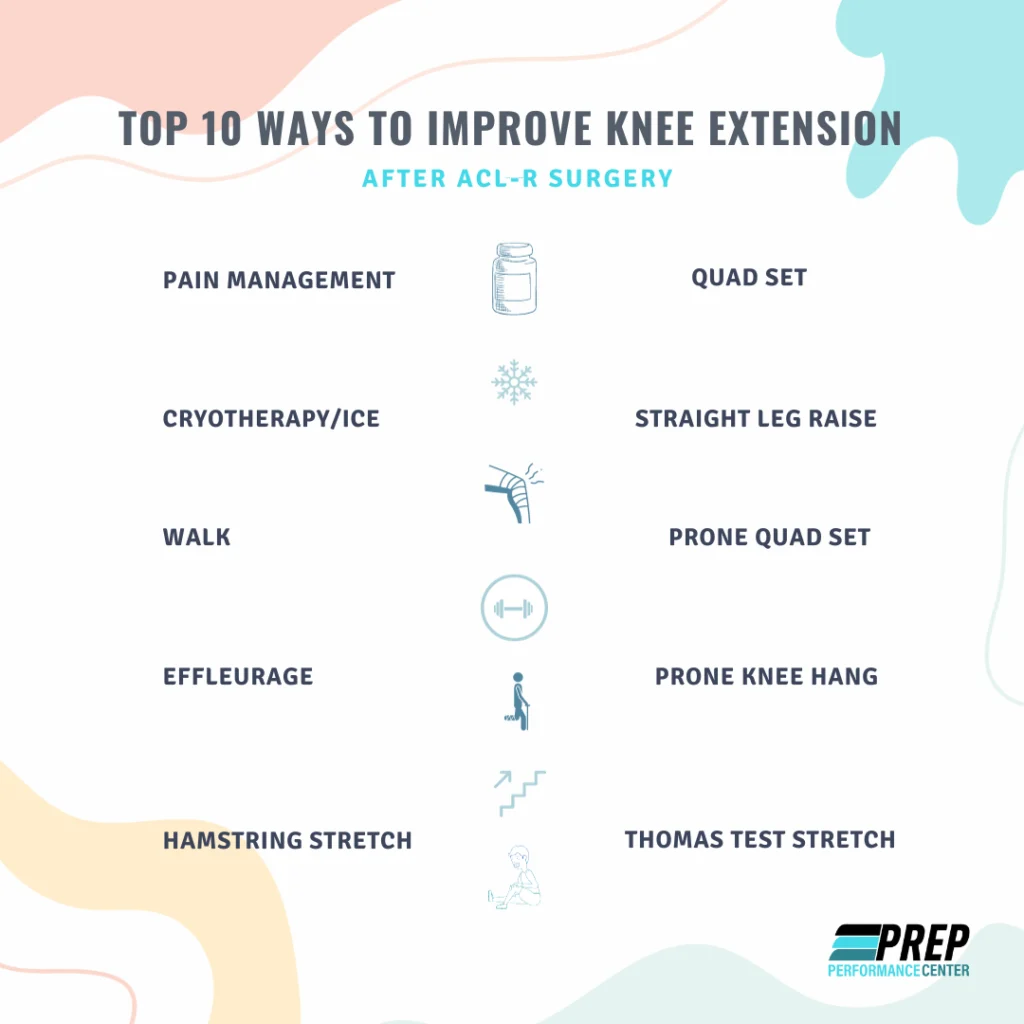A common challenge many patients face after ACL surgery is limited knee extension. It’s crucial to adhere to the guidelines provided by your doctor from the very first day after surgery. This initial phase, when healing is most critical, is when your knee is at its stiffest, sorest, and most swollen. It’s imperative to follow your doctor’s orders during the first few days and weeks after surgery, even if movement is painful. Movement plays a key role in enhancing function and overall progress toward achieving your recovery goals.
Refraining from moving your knee and avoiding pain can actually set you back. It allows the muscles, tendons, and ligaments to stiffen and provides inflammation a place to settle. The longer you delay knee movement, the more challenging it becomes. Here are some tips to follow starting from the first day after your knee surgery:

Explore this blog to discover essential insights about the importance of Early Mobilization: Things to remember on your first few weeks after surgery
If you find yourself still dealing with persistent knee discomfort a month after surgery, it’s crucial to initiate a meaningful dialogue with your physical therapist (PT) to tackle any areas that may need improvement. This discussion should center on the responsibilities and actions that both you and your PT should undertake.
While all PTs can treat ACL injuries, not all are experts in ACL rehabilitation. Many statistics concerning ACL rehab difficulties stem from poor progression during the rehab phase. Some progress too quickly, while others progress too slowly. Whether I’m treating elite athletes, moms, or dads, I emphasize the importance of Early Mobilization and quad strengthening. If you feel that you haven’t achieved nearly full range of motion, consider if you’re in the right place.
Ensuring that each patient has a solid foundation is crucial for achieving goals and a successful recovery. I’ve included some norms for your reference. If you’re not meeting these norms, I recommend discussing with your therapist how to incorporate some of these aspects or considering a PT who specializes more in ACL rehabilitation.
Manual therapy during this rehabilitation process is often underestimated. Many limitations in knee mobility result from muscle tightness and tendon issues. Early in the rehabilitation process, it’s essential to focus on tissue mobility to address muscle length restrictions that occur due to knee immobilization.
For instance, the quad muscle, particularly the rectus femoris, shortens when the knee remains extended. Immobilizing the knee in extension is necessary early in rehab to protect the new ACL, but it can simultaneously lead to muscle stiffness and shortening. Incorporating tissue mobilization techniques like soft tissue work, cupping, Graston, effleurage, dynamic stretching, and static stretching can be highly beneficial for achieving your range of motion goals.
Additionally the hamstring muscle, while it is in a lengthened position when the knee is extended in the brace, it can still get tight and stiff throughout the muscle belly and distal insertion just behind the knee.
We can’t always tell you WHY the muscles get tight, but they need a little TLC and sometimes that is just the right medicine to get you back on track with your range of motion goals.
Check out these two videos to see how I do my soft tissue mobilization with my post op ACL patients. These mobilization techniques should not cause the patient pain. There will be tenderness, but with the knee in a relaxed position, the soft tissue mobilization and effleurage will do wonders for knee mobility and function.
Check more blogs:


